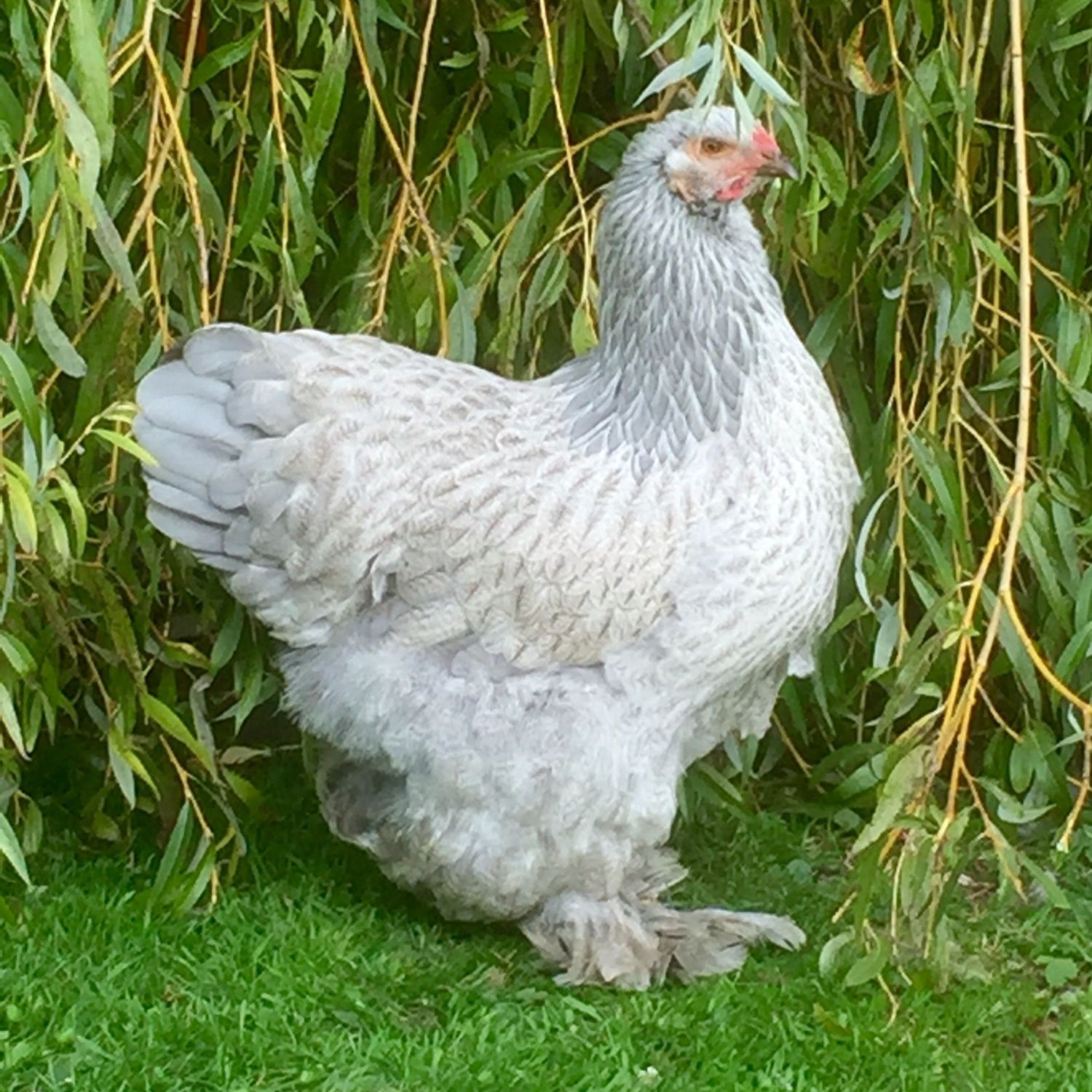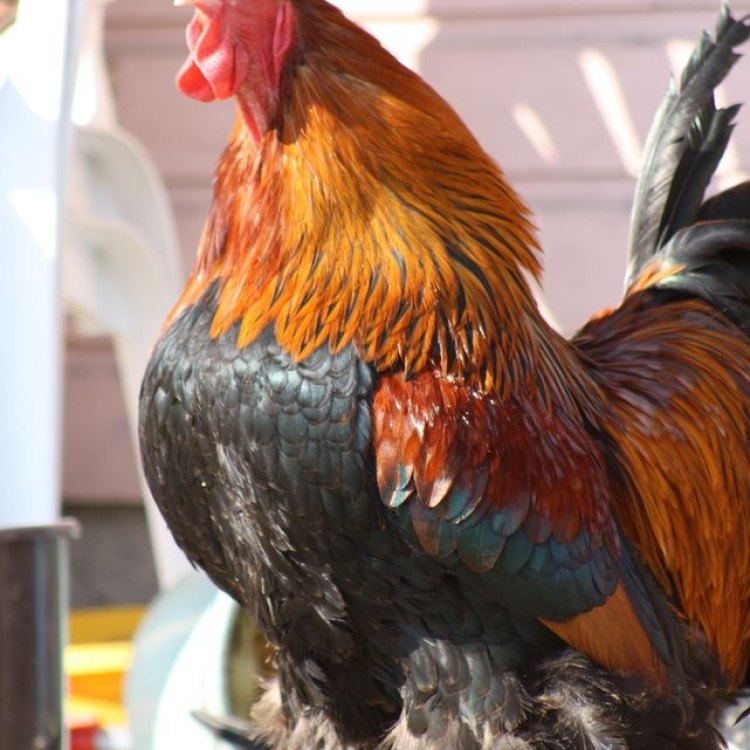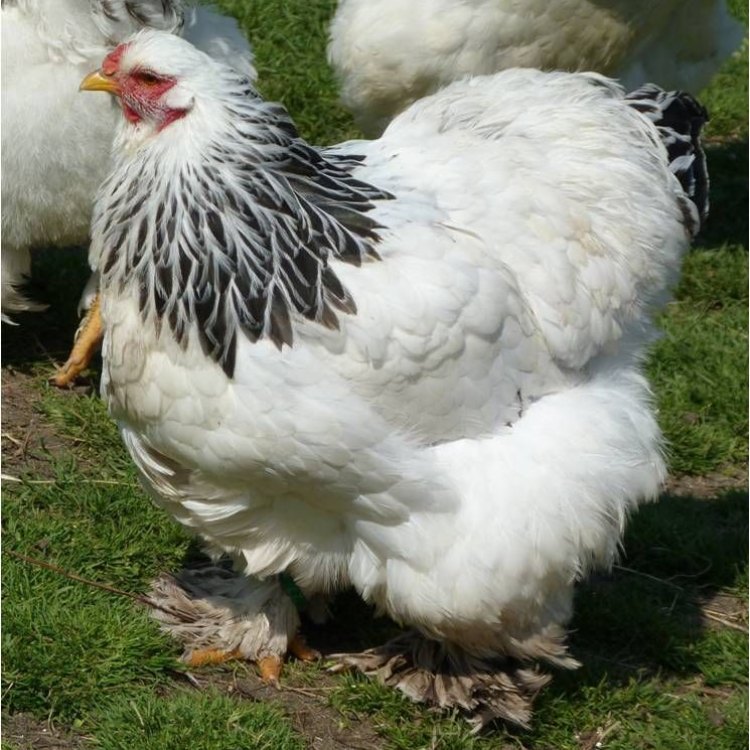
Brahma Chicken
20-26 inches
Meet the majestic Brahma Chicken - a large and heavy bird measuring 20-26 inches, belonging to the Phasianidae family. Native to North America and Asia, these birds make great backyard companions with their gentle nature and beautiful plumage. They are a must-have for any animal lover! #BrahmaChicken #NorthAmerica #Asia #Phasianidae
Animal Details Summary:
Common Name: Brahma Chicken
Kingdom: Animalia
Habitat: Farmyard, Backyards
The Majestic Brahma Chicken: A Fascinating Guide
Imagine a chicken so large and striking, it looks like it could have walked straight out of a fairy tale. Meet the Brahma Chicken, a magnificent bird that captures the attention of all who lay eyes on it. Proudly strutting with its enormous size and beautiful feather patterns, the Brahma chicken is a popular breed among poultry keepers and backyard farmers alike. But what makes this bird so unique? Let's dive into the fascinating world of the Brahma chicken and discover all there is to know about this majestic creature Brahma Chicken.The Basics: Scientific Name, Common Name, and Taxonomy
First and foremost, let's get acquainted with the Brahma chicken's scientific name – Gallus gallus domesticus. Don't let the Latin scare you, it simply means "domestic chicken" in the genus Gallus, which includes all domestic chickens. The Brahma chicken is one of the largest and oldest chicken breeds in the world, and it has been around since the mid-19th century.Brahma chickens are commonly known as the "king of chickens", and the name "Brahma" is derived from the Brahmaputra River in India, where the breed was first imported from. These birds are also referred to as "Shanghai" chickens, as they were said to have been brought to the United States from China's port city of Shanghai.
Classification and Distribution
As a member of the animal kingdom, the Brahma chicken belongs to the phylum Chordata and the class Aves, meaning it has a backbone and is a bird. Its order is Galliformes, which includes other domestic chickens, quails, and wildfowl. The Brahma chicken's family is Phasianidae, making it related to other gamebirds such as pheasants and partridges.Originally from the United States, the Brahma chicken has since spread worldwide and can be found in North America, Asia, and even Europe Barn Swallow. However, it is most commonly associated with the United States due to its origins in the country. In the early 19th century, the Brahma was exported to England, and from there, it made its way to the rest of Europe.
Habitat and Feeding Method
Brahma chickens can thrive in various habitats, from large, open farmyards to backyard coops. However, they are most commonly found in rural areas and small family farms. As long as they have enough space to stretch their legs and forage, they are happy and healthy birds.As omnivores, Brahma chickens have a varied diet. In the wild, they would consume a combination of seeds, insects, and small animals. When raised on a farm or in a backyard, they can be fed commercial chicken feed and supplements, along with any scraps or kitchen leftovers. However, it is essential to ensure a balanced diet to keep them healthy and thriving.
A Feast for the Eyes: Physical Characteristics
Perhaps the most striking feature of the Brahma chicken is its size. These birds can easily weigh up to 12 pounds, making them one of the most substantial chicken breeds in the world. In addition to their size, they have a unique and distinctive appearance that sets them apart from other breeds.Brahma chickens have loose, fluffy feathers that make them appear massive and round. They have a wide, muscular body with a broad, deep chest and short, strong legs. Their well-feathered shanks and feet allow them to withstand colder temperatures, making them a popular breed in colder climates.
One of the most notable features of the Brahma chicken is its striking color patterns. These birds can come in a variety of colors, including black, white, gray, brown, buff, gold, or partridge. Some Brahmas even have feather patterns that resemble snakeskin, making them truly unique and eye-catching.
A World Record Holder
Did you know that the Brahma chicken holds the record for the largest chicken egg in the world? In 1896, a Brahma hen in Australia laid an egg measuring an impressive 12.25-inches in circumference and 0.87 ounces in weight. This record has never been beaten, making the Brahma chicken both big and productive!Why Own a Brahma Chicken?
Now that we have learned about the Brahma chicken's impressive physical features and unique characteristics let's dive into why owning one could be a great idea for you. Let's explore the benefits of having Brahma chickens in your backyard or on your farm.- Calm and Docile: Despite their large size, Brahmas are known for their gentle and laid-back personalities. They are easy to handle and make great pets, even for children. This docile nature makes them a desirable breed for backyard farmers and hobbyists.
- Dual-Purpose Breed: The Brahma chicken is an excellent dual-purpose breed, meaning it is suitable for both meat and egg production. As mentioned previously, it holds the record for the largest egg, making it a top choice for egg-layers. Additionally, their large size makes them an ideal choice for meat production.
- Broody and Good Maternal Qualities: Brahmas are known for their broody nature, meaning they have a strong and natural instinct to sit on their eggs and hatch them. This makes them excellent mothers and caregivers to their chicklings.
- Cold Hardy: Due to their thick layer of feathers, Brahmas are well-suited for colder climates, making them a great choice for poultry enthusiasts living in these regions.
- Beautiful Addition to Your Poultry Flock: The Brahma chicken's unique and stunning appearance makes it an aesthetically pleasing addition to any backyard flock. Their large size and striking feathers are sure to turn some heads and make for a visually appealing coop.
Brahma Chicken Breeding and Care
If you are considering adding Brahma chickens to your flock, it's essential to understand the basics of breeding and caring for them. Breeding Brahmas is relatively easy, and as with any chicken breed, it all starts with selecting a healthy and well-formed rooster and hen.As for care, Brahmas are hardy birds and do not require any specialized care. However, as with any chicken breed, they do need proper shelter, regular feeding, fresh water, and proper husbandry practices. Ensure that they have enough space to forage and dust-bathe and provide them with supplements as needed to keep them healthy.
In Conclusion
In summary, the Brahma chicken is a remarkable breed that stands out for its impressive size, unique appearance, and desirable qualities. Both friendly and hardy, this chicken breed is a great choice for anyone looking to add something special to their backyard farm or flock. Whether you are a chicken enthusiast or simply appreciate the beauty of these birds, the Brahma chicken is truly a magnificent creature that deserves recognition and admiration.

Brahma Chicken
Animal Details Brahma Chicken - Scientific Name: Gallus gallus domesticus
- Category: Animals B
- Scientific Name: Gallus gallus domesticus
- Common Name: Brahma Chicken
- Kingdom: Animalia
- Phylum: Chordata
- Class: Aves
- Order: Galliformes
- Family: Phasianidae
- Habitat: Farmyard, Backyards
- Feeding Method: Omnivorous
- Geographical Distribution: Worldwide
- Country of Origin: United States
- Location: North America, Asia
- Animal Coloration: Black, White, Gray, Brown, Buff, Gold, or Partridge
- Body Shape: Large and heavy
- Length: 20-26 inches

Brahma Chicken
- Adult Size: 7-10 pounds
- Average Lifespan: 5-8 years
- Reproduction: Sexual
- Reproductive Behavior: Polygynous
- Sound or Call: Crowing
- Migration Pattern: Non-migratory
- Social Groups: Flock
- Behavior: Docile and gentle
- Threats: Predation, disease
- Conservation Status: Not listed
- Impact on Ecosystem: Seed dispersal
- Human Use: Meat, eggs
- Distinctive Features: Feathers on legs, small wings, pea comb, and large size
- Interesting Facts: Brahma chickens are known for their docile and friendly nature. They are one of the largest chicken breeds and are often kept as pets. They have feathers on their legs and a pea comb, which is a small, low-lying comb. Brahmas also have small wings in proportion to their body size.
- Predator: Foxes, raccoons, dogs, and snakes

Gallus gallus domesticus
Brahma Chicken: The Gentle Giant of the Poultry World
In a world filled with flashy and exotic creatures, the Brahma chicken may not stand out at first glance. But this gentle giant of the poultry world has many unique features that make it one of the most fascinating and beloved chicken breeds. From its docile nature to its distinctive appearance, the Brahma chicken has captured the hearts of poultry enthusiasts and farmers alike.Originating from the Brahmaputra River in India, the Brahma chicken made its way to the western world in the mid-19th century PeaceOfAnimals.Com. It quickly gained popularity due to its impressive size and attractive appearance, and it has been a favorite among chicken farmers and backyard enthusiasts ever since.
One of the most striking features of the Brahma chicken is its size. As adults, they can reach a weight of 7 to 10 pounds, making them one of the largest chicken breeds. This impressive size is not only eye-catching but also serves a practical purpose. Brahmas are known for their ability to withstand cold temperatures, making them ideal for farming in colder climates.
Aside from their size, Brahmas also have a unique appearance that sets them apart from other chicken breeds. They have feathers on their legs, which gives them a fluffy and regal appearance. This feature, combined with their impressive size, can make them look almost like miniature ostriches. Brahmas also have a distinct pea comb, which is a small, low-lying comb compared to the traditional single comb found in most chickens Bredls Python. This gives them a unique and charming look.
But perhaps the most interesting fact about Brahma chickens is their gentle and docile nature. Unlike some of their more aggressive counterparts, Brahmas are known for their calm and friendly demeanor. They are often kept as pets, and many poultry enthusiasts describe them as "gentle giants." This docile nature makes them easy to handle and a favorite among families with young children.
Due to their large size and gentle nature, Brahmas are often used for meat and egg production. Their meat is known for being tender and flavorful, and their large size makes them an ideal choice for those looking to raise chickens for consumption. Additionally, Brahma eggs are much larger than those produced by other chicken breeds, making them a favorite among egg lovers.
Reproduction in Brahma chickens is sexual, meaning they require a rooster and hen to reproduce. However, their reproductive behavior is unique in that they practice polygyny. This means that one rooster will mate with multiple hens, unlike some other chicken breeds where the hens will mate with multiple roosters.
Brahma chickens also have a non-migratory migration pattern, meaning they do not migrate during different seasons. They are often found in flocks, social groups of chickens that live and move together. These flocks are not only important for socialization but also serve as a means of protection against threats.
Like any other animal, Brahmas are susceptible to threats such as predation and disease. Their large size makes them an easy target for predators such as foxes, raccoons, dogs, and snakes. Additionally, they can also suffer from diseases like any other livestock animal, which can affect their health and lifespan.
Speaking of lifespan, the average lifespan of a Brahma chicken is 5 to 8 years. This may seem short compared to other domesticated animals, but it is still relatively long for a chicken. As with any animal, proper care and nutrition can play a significant role in extending their lifespan.
Despite being vulnerable to threats and diseases, Brahma chickens are not listed on the International Union for Conservation of Nature (IUCN) Red List. This means that their population is not at risk, and they are still widely bred and raised around the world.
Aside from their role in agriculture and as pets, Brahma chickens also have an impact on the ecosystem. They are known for their seed dispersal abilities as they forage through the ground for food. This helps to spread seeds and allows for new plants to grow, contributing to the natural balance of the environment.
In conclusion, it is clear that Brahma chickens are an exceptional and unique breed of chickens. Their impressive size, docile nature, and distinctive appearance make them stand out among other chicken breeds. From being raised for meat and eggs to serving as loving pets, these gentle giants have found a special place in the hearts of many and will continue to do so for years to come.

The Majestic Brahma Chicken: A Fascinating Guide
Disclaimer: The content provided is for informational purposes only. We cannot guarantee the accuracy of the information on this page 100%. All information provided here may change without prior notice.












